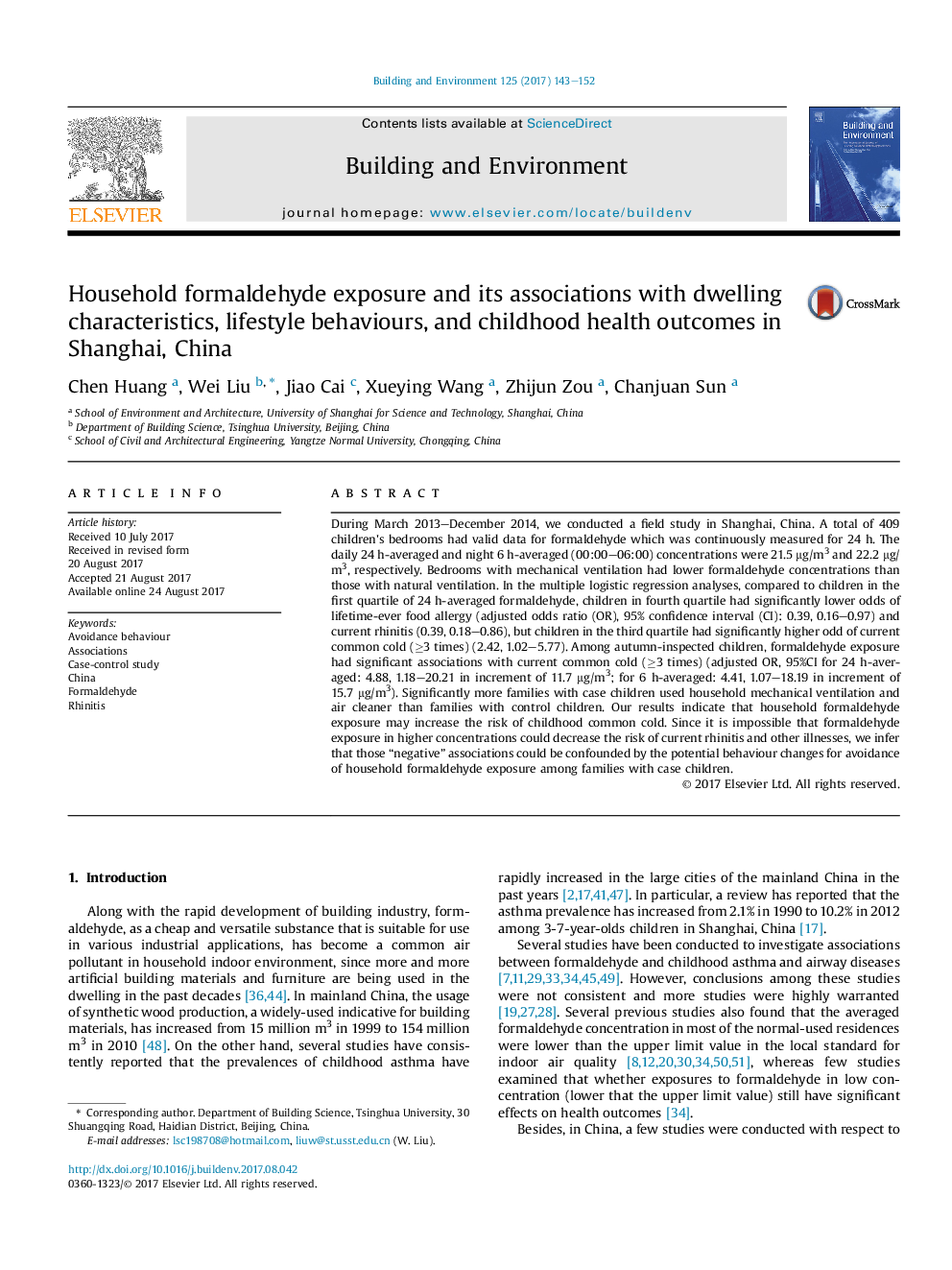| کد مقاله | کد نشریه | سال انتشار | مقاله انگلیسی | نسخه تمام متن |
|---|---|---|---|---|
| 6698616 | 1428367 | 2017 | 10 صفحه PDF | دانلود رایگان |
عنوان انگلیسی مقاله ISI
Household formaldehyde exposure and its associations with dwelling characteristics, lifestyle behaviours, and childhood health outcomes in Shanghai, China
ترجمه فارسی عنوان
قرار گرفتن در معرض فرمالدئید خانگی و ارتباط آن با ویژگی های مسکن، رفتارهای شیوه زندگی و نتایج سلامتی دوران کودکی در شانگهای، چین
دانلود مقاله + سفارش ترجمه
دانلود مقاله ISI انگلیسی
رایگان برای ایرانیان
کلمات کلیدی
رفتار اجتناب ناپذیر، انجمن ها، مطالعه موردی شاهد، چین، فرمالدئید، رینیت،
موضوعات مرتبط
مهندسی و علوم پایه
مهندسی انرژی
انرژی های تجدید پذیر، توسعه پایدار و محیط زیست
چکیده انگلیسی
During March 2013-December 2014, we conducted a field study in Shanghai, China. A total of 409 children's bedrooms had valid data for formaldehyde which was continuously measured for 24 h. The daily 24 h-averaged and night 6 h-averaged (00:00-06:00) concentrations were 21.5 μg/m3 and 22.2 μg/m3, respectively. Bedrooms with mechanical ventilation had lower formaldehyde concentrations than those with natural ventilation. In the multiple logistic regression analyses, compared to children in the first quartile of 24 h-averaged formaldehyde, children in fourth quartile had significantly lower odds of lifetime-ever food allergy (adjusted odds ratio (OR), 95% confidence interval (CI): 0.39, 0.16-0.97) and current rhinitis (0.39, 0.18-0.86), but children in the third quartile had significantly higher odd of current common cold (â¥3 times) (2.42, 1.02-5.77). Among autumn-inspected children, formaldehyde exposure had significant associations with current common cold (â¥3 times) (adjusted OR, 95%CI for 24 h-averaged: 4.88, 1.18-20.21 in increment of 11.7 μg/m3; for 6 h-averaged: 4.41, 1.07-18.19 in increment of 15.7 μg/m3). Significantly more families with case children used household mechanical ventilation and air cleaner than families with control children. Our results indicate that household formaldehyde exposure may increase the risk of childhood common cold. Since it is impossible that formaldehyde exposure in higher concentrations could decrease the risk of current rhinitis and other illnesses, we infer that those “negative” associations could be confounded by the potential behaviour changes for avoidance of household formaldehyde exposure among families with case children.
ناشر
Database: Elsevier - ScienceDirect (ساینس دایرکت)
Journal: Building and Environment - Volume 125, 15 November 2017, Pages 143-152
Journal: Building and Environment - Volume 125, 15 November 2017, Pages 143-152
نویسندگان
Chen Huang, Wei Liu, Jiao Cai, Xueying Wang, Zhijun Zou, Chanjuan Sun,
